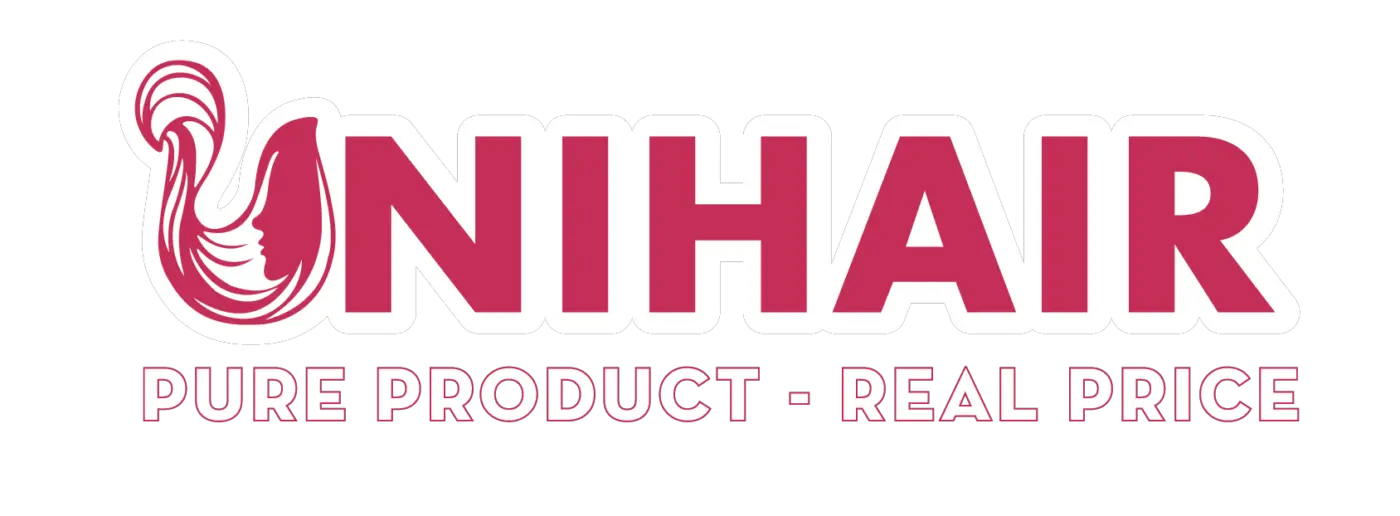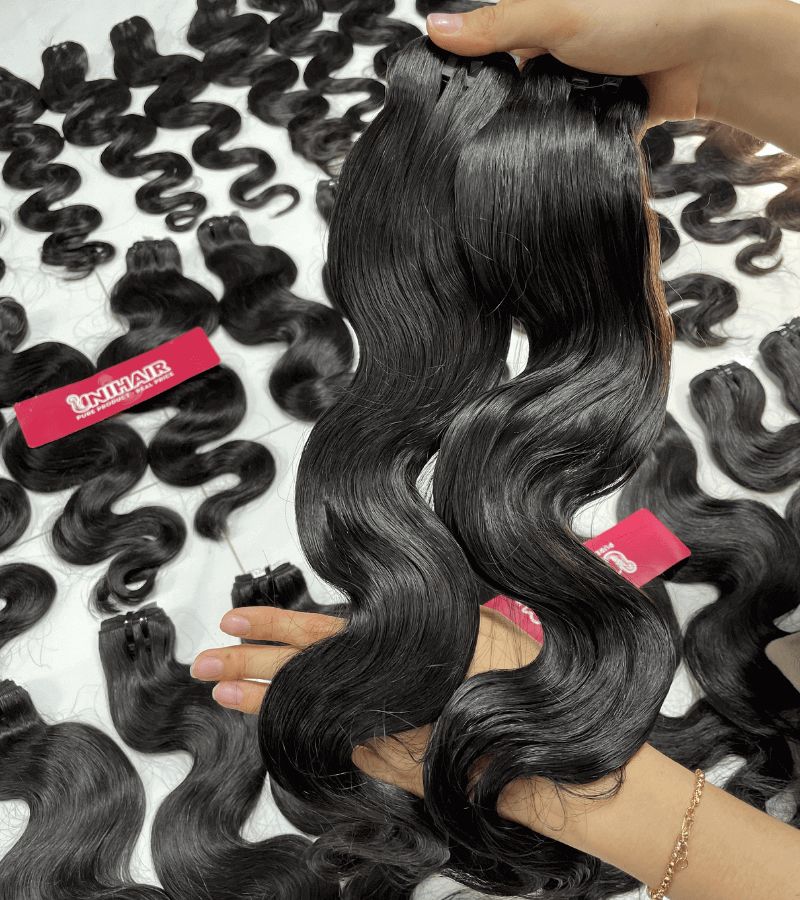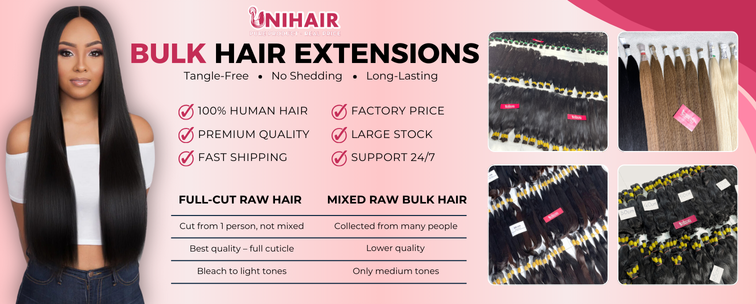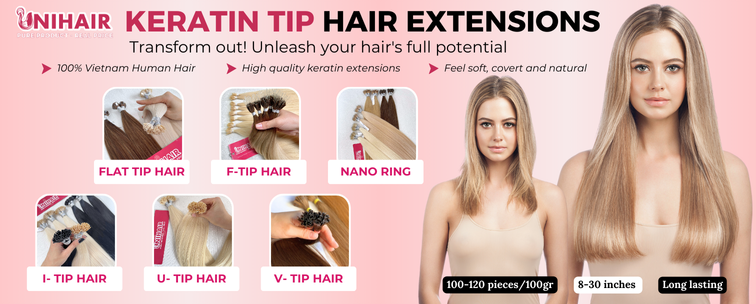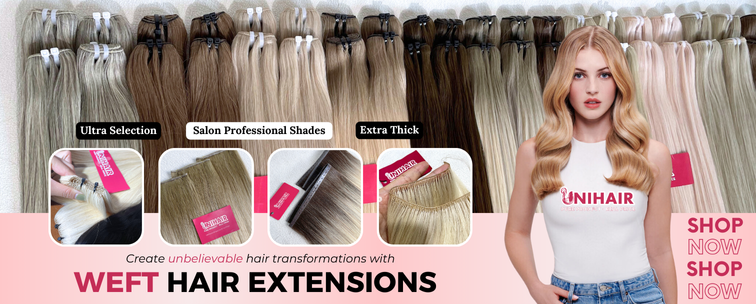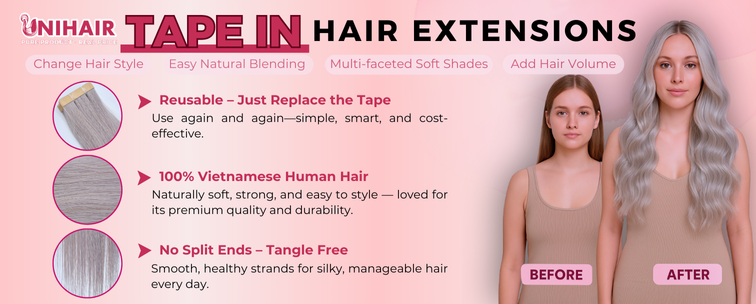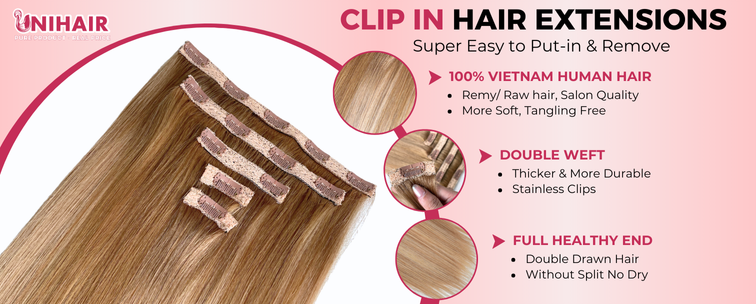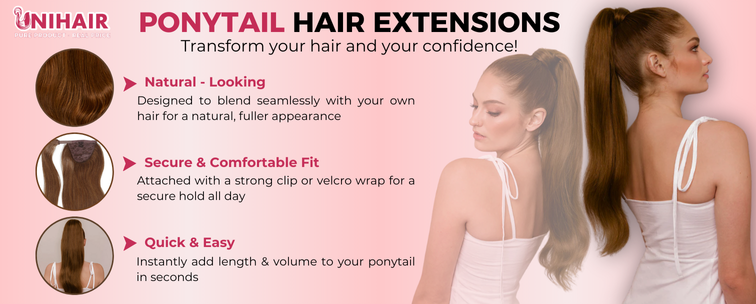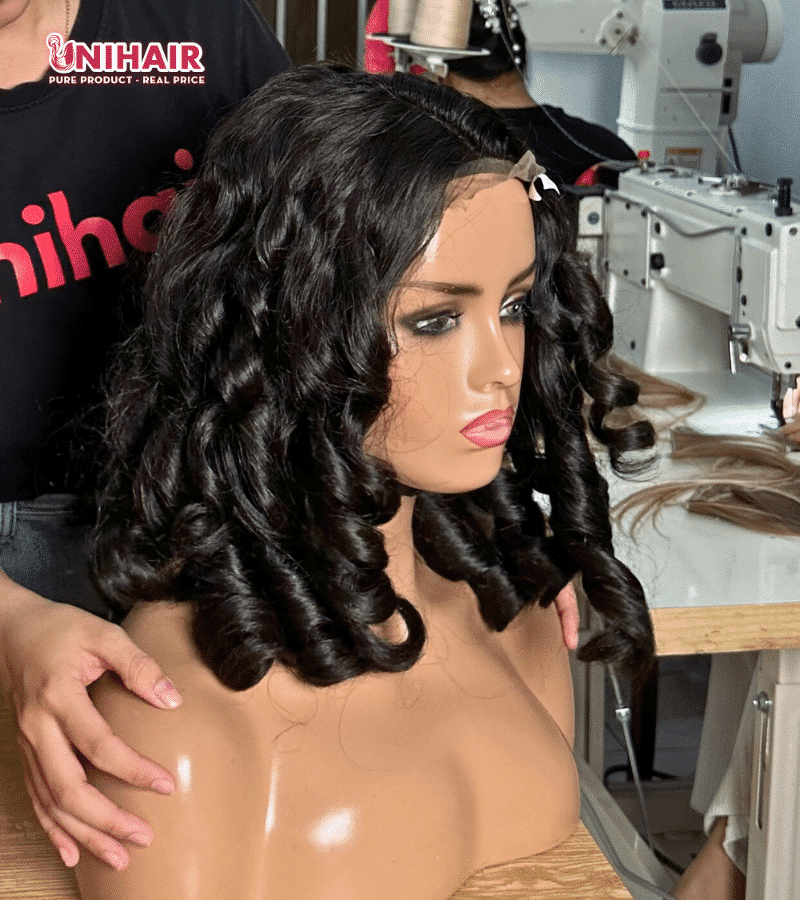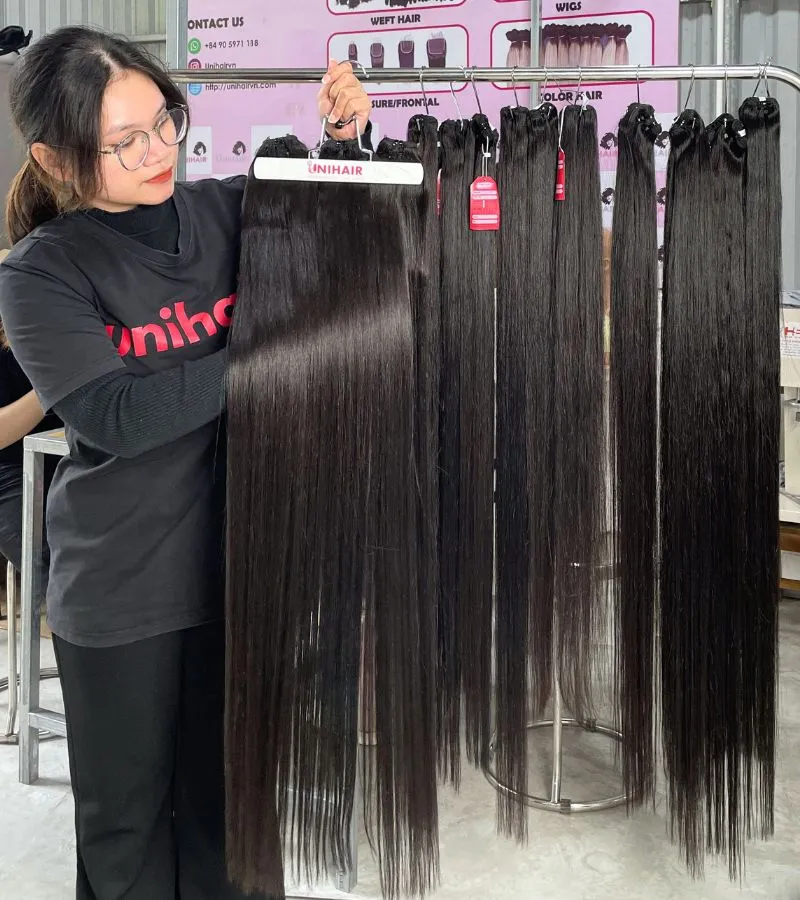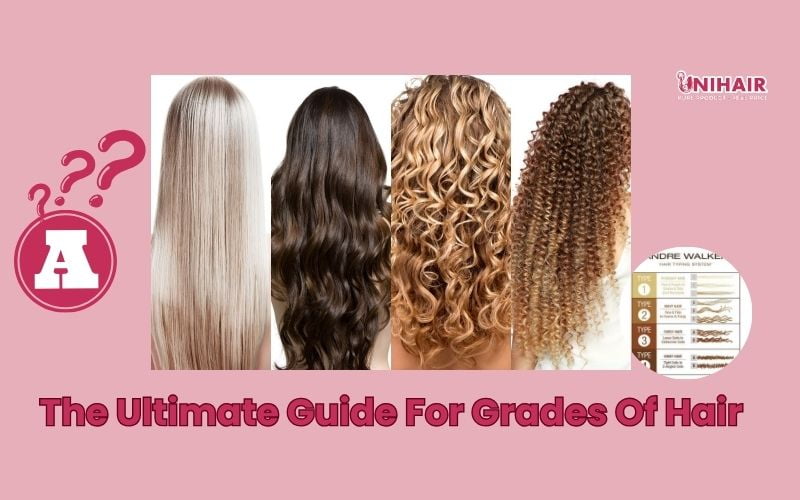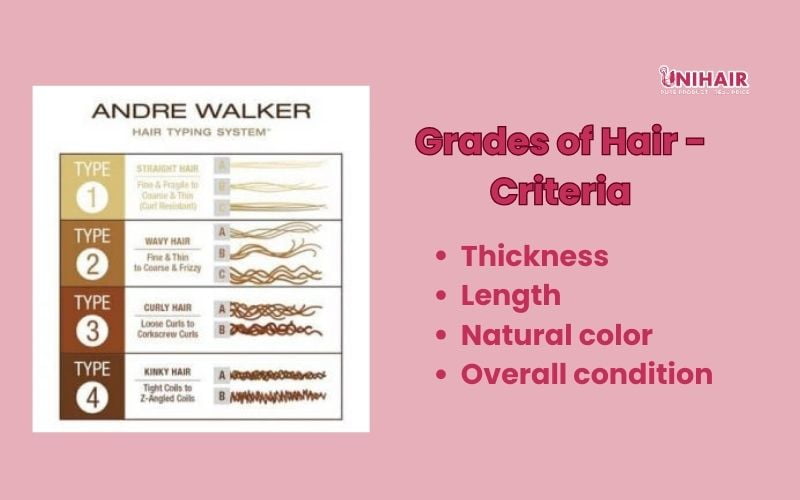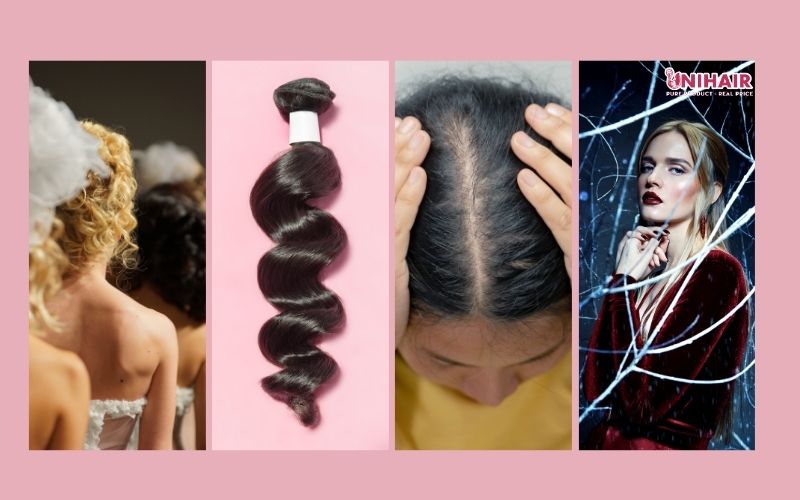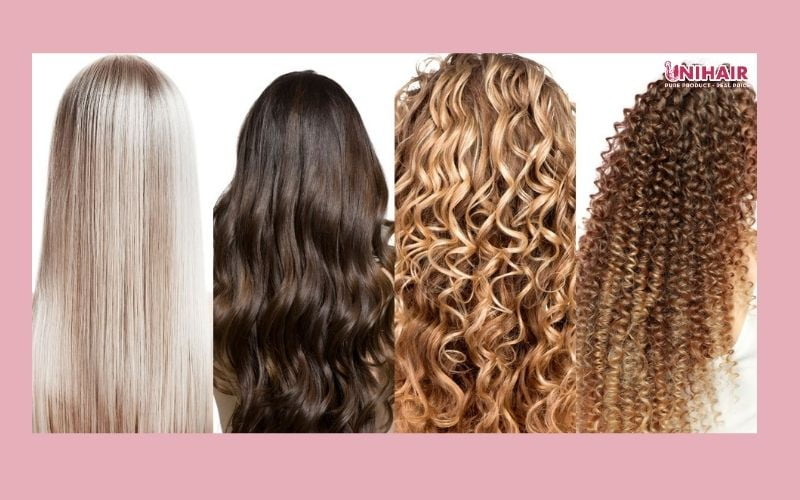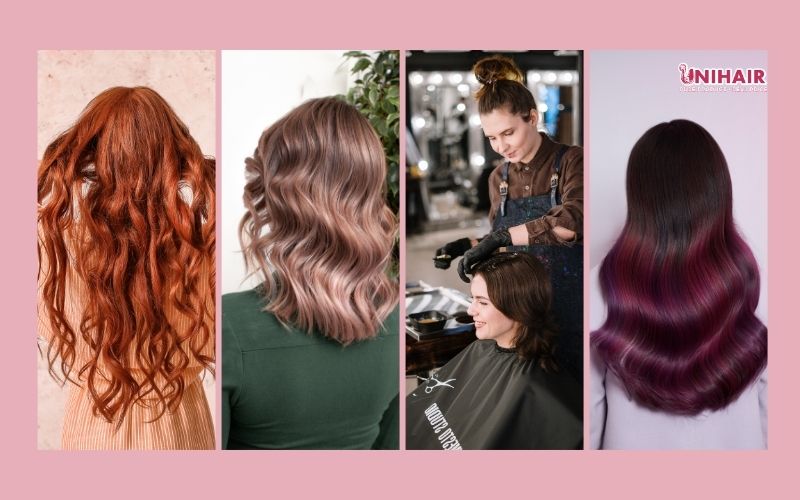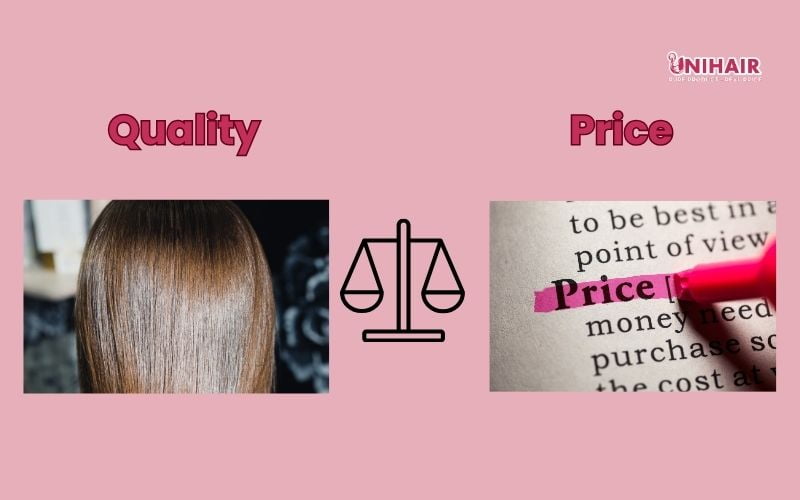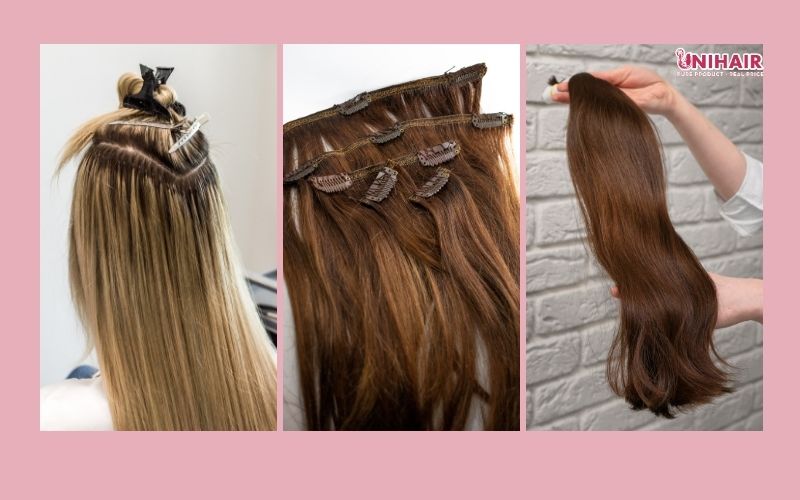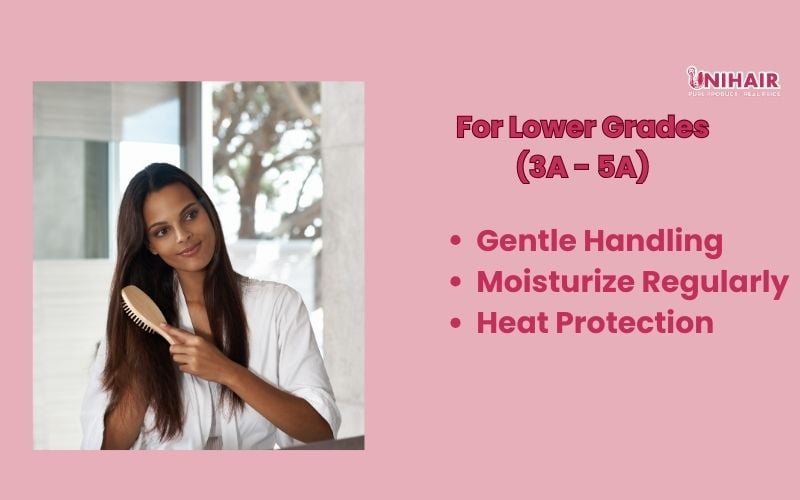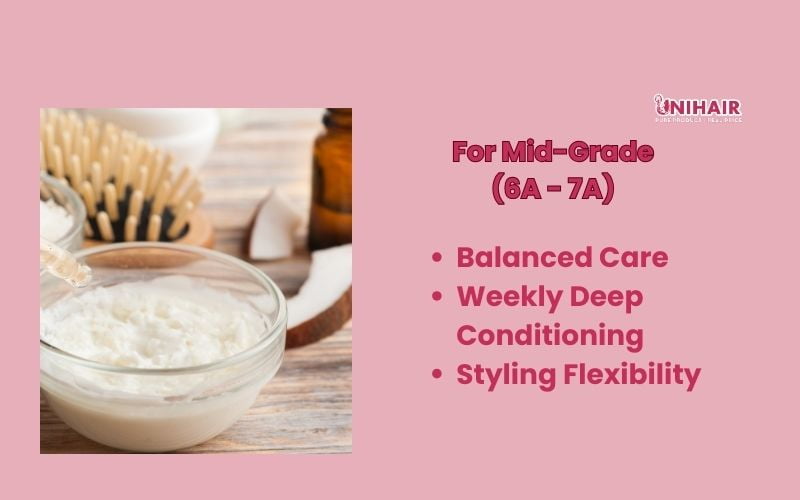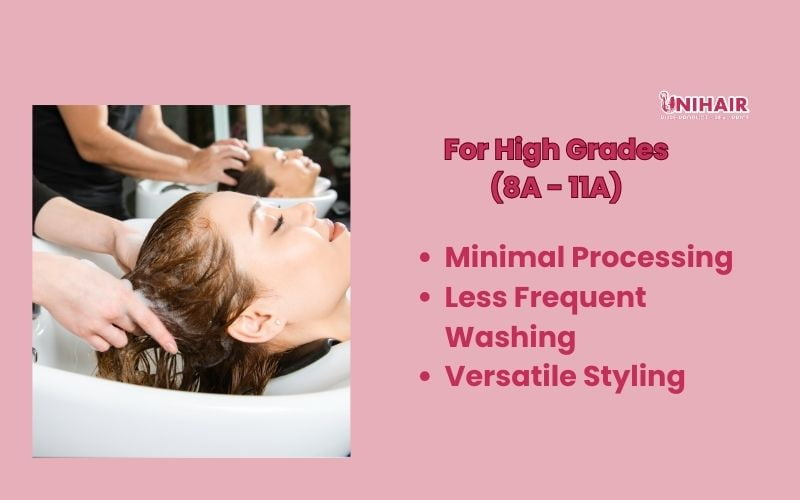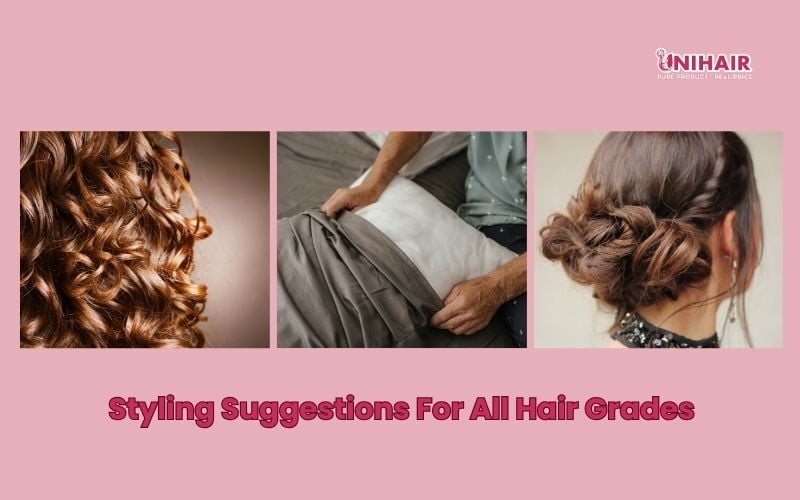The Ultimate Guide For Grades Of Hair
Your hair is an essential part of your identity and style, but have you ever wondered what sets one strand apart from another? Enter the world of “Grades of Hair” with UnihairVN! Understanding hair grades is your key to unlocking the secrets of perfect hair. In this comprehensive guide, we’ll demystify the world of hair grading, providing you with a clear and concise roadmap to navigate the diverse landscape of hair quality.
Are you confused about what the ‘A’ numbers represent or curious about how to choose the right hair extensions based on grades? Our article about grades of hair is your final destination. Whether you’re an aspiring hairstylist, a beauty enthusiast, or simply someone looking to enhance their hair game, join us on this journey to discover why knowing your grade of hair is the cornerstone of achieving your hair aspirations.
Understanding All Grades Of Hair
What Are the Grades of Hair?
Hair grades serve as a standardized system for categorizing and evaluating the quality of human hair such as the Andre Walker Hair Typing System. They play a pivotal role in the beauty and haircare industry by providing a universally understood framework to assess the attributes of different types of hair.
At their core, hair grades are a set of criteria used to determine the overall quality, texture, and durability of human hair. These criteria encompass factors like thickness, length, natural color, and overall condition.
Grades of Hair – Criteria
By assigning specific grades of hair, professionals and consumers alike can make informed decisions when it comes to choosing products, extensions, and haircare routines that align with their specific needs and preferences.
Significance of Hair Grades in Different Industries
The significance of hair grades extends far beyond just the beauty and haircare sectors. These grades have profound implications in various industries.
- For instance, in the beauty industry, grades of hair dictate the quality of wigs, weaves, and extensions, ensuring that customers receive the desired look and feel.
- In the fashion world, hair grades are essential parts of creating high-quality hairpieces for runway shows and photo shoots.
Significance of Hair Grades in Different Industries
- Additionally, the medical field relies on hair grades when crafting custom hair prosthetics for patients dealing with hair loss due to medical conditions.
By understanding the grades of hair charts, professionals can provide tailored solutions that cater to individual needs, making them an essential tool in a multitude of industries. Whether you’re a hairstylist, a fashion designer, or a medical practitioner, grasping the intricacies of hair grades is fundamental to delivering top-notch results and satisfying customers across the board.
Hair Grade Chart
To simplify the complexities of hair grades, we’ve compiled a comprehensive hair grades chart that categorizes different grades, making it easier for you to identify and understand the varying qualities of human hair. This chart typically includes several grades of hair, each with its own unique characteristics. Here’s a snapshot of what you can expect:
- 3A Grade: 3A grade hair represents a lower quality level. It typically undergoes extensive processing, which can result in compromised texture and durability. It’s often more affordable but requires more maintenance.
- 4A Grade: Slightly better than 3A, 4A grade hair has undergone some processing but retains a reasonable texture and appearance. It offers a balance between quality and affordability among all grades of hair.
- 5A Grade: 5A grade hair is a step up in quality, with less processing and better durability. It maintains a decent texture and appearance, making it a popular choice for extensions and wigs.
- 6A Grade: 6A grade hair is considered good quality among other grades of hair. It’s less processed, often maintaining its natural texture and color. This grade provides durability and versatility for styling.
- 7A Grade: 7A grade hair is of higher quality, typically virgin hair with minimal processing. It offers excellent durability and a natural, healthy appearance, making it a top choice for extensions.
- 8A Grade: 8A grade hair is high-quality virgin hair with minimal processing. It’s known for its softness, durability, and natural appearance, making it ideal for various hairstyles.
- 9A Grade: 9A grade hair represents premium quality virgin hair. It’s minimally processed, ensuring a luxurious feel, durability, and a natural look. It’s often chosen for top-tier extensions.
- 10A Grade: 10A grade hair is among the highest quality grades of hair available. It’s unprocessed virgin hair known for its exceptional texture, longevity and the closest resemblance to natural hair.
- 11A Grade: 11A grade hair represents the pinnacle of hair quality. It’s unprocessed, virgin hair that’s exceptionally soft, durable, and virtually indistinguishable from natural hair. This grade is prized for its luxury.
Keep in mind that while these grades provide a general overview, individual suppliers may have their grading systems, so it’s essential to ask for specific details when purchasing hair extensions or products that align with your preferences and budget.
How to Choose the Right Hair Extensions Based on Grades
Selecting the perfect hair extensions can be a game-changer for your hairstyle, and understanding the correlation between grades of hair and extension quality is pivotal in making the right choice. Hair grades directly influence the appearance, longevity, and overall satisfaction with your extensions. Here are some essential tips and guidelines to assist you in picking the best hair extensions that align with your unique needs and preferences:
Understand the Grades of Hair
Begin by familiarizing yourself with the hair grade chart, which categorizes hair into different quality levels. Let’s check the previous part for overall understanding and remember that the higher the grade, the closer it is to natural, unprocessed hair.
Texture Matters
Texture – A Factor To Choose Right Hair Extensions Based on Grades
Pay attention to the texture of the extensions, as they should complement your natural hair. If you have straight hair, choose extensions with a similar texture, and likewise for curly or wavy hair. This ensures a seamless blend and reduces the need for extensive styling.
Length and Color
Length and Color – A Factor To Choose Right Hair Extensions Based on Grades
Determine the length and color that suit your hairstyle goals. Hair extensions come in various lengths and shades, so select the grades of hair that seamlessly integrate with your current hair or the look you want to achieve.
Quality Over Price
Quality & Price Balance – A Factor To Choose Right Hair Extensions Based on Grades
While budget is a consideration, prioritize quality over price. Investing in higher-grade extensions might cost more initially, but they tend to last longer, resulting in a better long-term investment.
Method of Attachment
Method of Attachment – A Factor To Choose Right Hair Extensions Based on Grades
Different hair extension methods, such as clip-ins, tape-ins, or sew-ins, offer varying levels of convenience and permanence. So, just choose the grades of hair made by a method that aligns with your lifestyle and desired hairstyle changes!
Consult a Professional
If you’re unsure about which extensions are best for you, consult your hairstylist or extension expert at UnihairVN. They can provide personalized recommendations based on your grades of hair and style goals.
Extension experts at UnihairVN For Your Best Hair Extensions
By applying these guidelines and considering factors like your budget, desired hairstyle, and attachment method, you’ll be well-equipped to choose the right hair extensions that not only suit your grades of hair but also ensure satisfaction and confidence in your new style.
DIY Hair Care for Different Hair Grades: Tips and Tricks
Taking care of your hair is essential for maintaining its health and vitality, but the care regimen should vary based on different grades of hair. Whether you have lower-grade hair that requires extra attention or high-grade hair that’s naturally resilient, here are some practical tips and tricks to help you nurture your tresses:
For Lower Grades of Hair (3A – 5A)
- Gentle Handling: Be extra gentle when detangling and styling low grades of hair to prevent breakage.
- Moisturize Regularly: Use hydrating shampoos and conditioners to combat dryness, and apply leave-in conditioners to maintain moisture throughout the day.
- Heat Protection: Limit heat styling tools and always use a heat protectant spray when necessary.
Hair Care Tips For Lower Grades (3A – 5A)
For Medium Grades of Hair (6A – 7A)
- Balanced Care: Maintain a balanced hair care routine, using quality shampoos and conditioners suited to your grades of hair.
- Weekly Deep Conditioning: Incorporate weekly deep conditioning treatments to keep your hair healthy and manageable.
- Styling Flexibility: Enjoy more styling options with mid-grade hair, but still use heat styling tools in moderation to preserve its texture.
Hair Care Tips For Mid-Grade (6A – 7A)
For High Grades of Hair (8A – 11A)
- Minimal Processing: High-grade hair needs minimal processing, so focus on gentle cleansing and natural products to maintain its pristine quality.
- Less Frequent Washing: High grades of hair can go longer between washes, as it retains its freshness for extended periods.
- Versatile Styling: High-grade hair offers incredible versatility in styling. Experiment with various hairstyles, from sleek straight to voluminous curls.
Hair Care Tips For High Grades (8A – 11A)
Product Recommendations
- Sulfate-free shampoos and conditioners that suit your grades of hair.
- Weekly hair masks or deep conditioners to nourish and strengthen your hair.
- Wide-tooth combs or detangling brushes to prevent breakage when brushing wet hair. You can read our article: How To Choose The Right Brush For Curly Hair And The Proper Way To Use It for a detailed guide.
- Heat protectant sprays with added moisturizing benefits to safeguard your hair from heat damage.
Hair Care Product Recommendations For All Hair Grades
Styling Suggestions
- Embrace your natural texture, whether it’s curly, wavy, or straight, to minimize heat styling.
- Experiment with protective hairstyles, such as braids or updos, to reduce daily manipulation.
- Opt for satin pillowcases to prevent friction and minimize frizz while you sleep. It is one of the helpful tips in our Sleeping In A Wig 101: Your Go-To Guide For Overnight Wig Care. Just check it out if you’re interested!
Styling Suggestions For All Hair Grades
By tailoring your hair care routine to your grades of hair and following these tips and product recommendations, you can ensure that your hair remains healthy, beautiful, and full of life, no matter its grade.
Frequently Asked Questions (FAQs) About Hair Grades
We understand that grades of hair can sometimes be a puzzling topic. To clear up any lingering questions you might have, here are some common FAQs:
Q: What is 10A Hair?
A: 10A grade hair is a designation for the highest quality of virgin hair extensions. It represents unprocessed hair with a luxurious texture and exceptional durability.
Q: What Sets Remy and Non-Remy Hair Apart?
A: Remy hair is collected in a way that preserves the natural alignment of hair cuticles, resulting in smoother and more tangle-free extensions. Non-Remy hair, on the other hand, may have cuticles going in different directions, requiring more processing to achieve a smooth texture.
Q: What Does 10A Hair Mean?
A: If you’re confused between 10A and other grades of hair, we’re here to help. The “10A” in hair grading signifies the quality level of the hair. Higher numbers indicate superior quality, with 10A being the pinnacle. The 10a grade hair meaning is that the hair is unprocessed and of the finest quality.
Q: Can Hair Grades Vary Among Suppliers?
A: Yes, hair grades can vary among different suppliers and brands. It’s essential to inquire about a specific supplier’s grading system to ensure you’re getting the quality you desire.
Q: Is 10A Hair Good?
A: Yes, 10A hair is considered excellent in terms of quality. It is known for its softness, longevity, and natural appearance, making it one of the preferred grades of hair for those seeking top-tier hair extensions.
Q: Is There a Standardized Hair Grading System Worldwide?
A: While there are common grading systems, there is no universally standardized hair grading system worldwide. Different regions and suppliers may have their own grading criteria, so it’s crucial to understand the system used by your chosen supplier.
Q: Are Higher-Grade Hair Extensions More Expensive?
A: Generally, extensions from high grades of hair do come at a higher price point due to their superior quality and durability. However, the investment often pays off in terms of longevity and a more natural look.
Q: How Can I Maintain the Quality of My Hair Extensions?
A: To maintain the quality of your hair extensions, avoid excessive heat styling, use sulfate-free shampoos and conditioners, and detangle them gently with a wide-tooth comb. Additionally, you also need to store them carefully if not in use. For more information, check out our article: Everything You Need to Know About Hair Extensions.
Q: What Is the Best Grade of Virgin Hair?
A: The best grade of virgin hair depends on your specific needs and budget. Higher grades of hair like 10A and 11A offer exceptional quality, while lower grades may be more budget-friendly. The “best” grade for you will align with your preferences and styling goals.
Q: Can I Dye or Color My Hair Extensions?
A: Whether you can dye or color your hair extensions depends on the grade and quality of the hair. Higher-grade, unprocessed hair extensions can typically be dyed or colored, but it’s advisable to consult with a professional stylist for the best results and to avoid damage.
We hope these answers provide clarity regarding the grades of hair. If you have more questions or need further guidance, please don’t hesitate to reach out. We’re here to assist you in making informed decisions about your hair care and extensions. Your unique hair journey is our priority!
Conclusion
In wrapping up our guide to hair grades, remember that these grades are your key to informed decisions in hair care and extensions. They provide a clear roadmap to understanding hair quality, with higher grades signaling unprocessed, top-tier hair. Whether you’re selecting extensions, devising a hair care routine, or venturing into professional styling, grasping these grades of hair is essential.
By choosing wisely, you ensure your hair remains healthy and radiant. Don’t forget to explore our related content and resources to further enhance your hair journey. With the right knowledge, your dream of beautiful, confident hair is well within reach.
